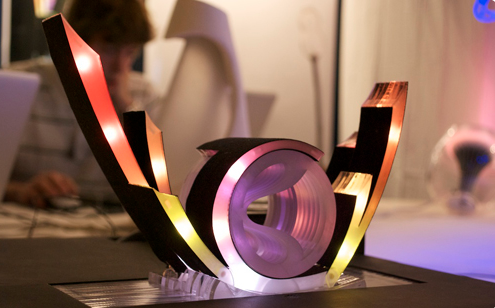At university I’ve been given a project of designing an Active Form product. In terms of quickly summarising what that is without putting you to sleep, it’s a representation of a system or routine due to the similar shape of a recognisable interaction.
WHAT?! Exactly my thoughts when I first heard it.
ASLEEP YET? It’s a fairly new area in design so I’ll give you a couple of examples of what I mean rather than a fairly adequate description. But before, some key words popped in my head in this introduction lecture that I think need considering.
-Active
-Ritual
-Metaphor
My lecturer, Ben Salem, has helped these Active Form products come to life. Here’s the link to his quick overview into Active Forms and pictures/ descriptions of the projects he supervised whilst at the Eindhoven University of Technology
http://bsalem.info/projects/pro_activeforms00.html
ACTIVE FORM 1
 (all picture and video rights are reserved by Ben Salem)
(all picture and video rights are reserved by Ben Salem)
This active form represents a petal and a flower. The colour of the device changes due to heat and is ergonomically interacted with like a flower. The petal is opened and closed semi-automatically and reflects the atmosphere of the room whilst the core can be blown on or rubbed to change the temperature of the room. The video briefly shows the working prototype.
The link has and shows all: http://bsalem.info/projects/pro_activeforms10.html
ACTIVE FORM 2
 (again, all rights are reserved by Ben Salem)
(again, all rights are reserved by Ben Salem)
This is another form of tangible interaction of an active form. This time it involves making TEA. This follows the routine of making tea and involves the metaphor of flowers in a vase, the vase holding the boiling water and the petals hold different types of tea.
How It Works? As mentioned before, it works by placing different brand/ type of tea leaves into the bulb type petal. Once the stem is pushed down it triggers the water to start boiling (like switching the kettle switch), the stem will rise vertically again when the water is boiled (similar to when the switch is released in a kettle). Then the stem is pushed back down with the cap on the bulb being opened releasing the ready made tea.
On a personal note, I prefer the second active form as a whole. The reasons being the simplicity and the idea of the design is something I highly praise. The other design is simple and clever but I think it fails to beat the tea maker with the 3 words I associate with Active Form. I like how both designs encompass nature and human rituals in one design